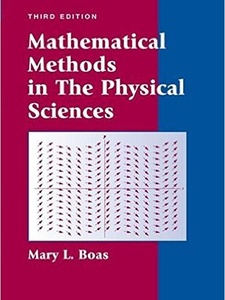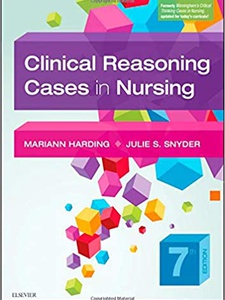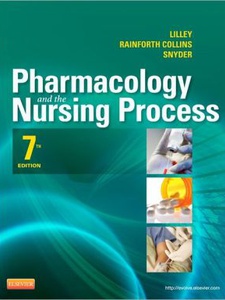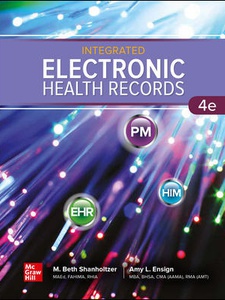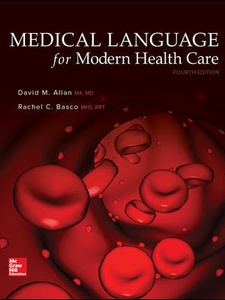-
-
October 24 2015, 12:16
- Образование
- Cancel
В марте 2016 года начнется еще один сезон 就職活動 (активный поиск работы) трудоустройства выпускников! Но это не значит, что до марта можно отдыхать. По себе могу сказать: мне не хватало сведений о том, как все проходит. И это не смотря на то, что в университетский центр трудоустройства очень активно помогал (проводил лекции, проверял мои документы и опусы для сопроводительных писем, репетировал собеседования и т.д.). Так же я много читала о японских собеседованиях, но когда начала сама все это проходить, поняла, как много у меня пробелов… И больше всего не доставало опыта других русских, кто уже через все прошел. Именно поэтому хочу записать воспоминания здесь.
Итак, будущему выпускнику лучше всего начать готовиться к экзаменам в компанию уже сейчас. Это очень важно, т.к. тестирование проводят все работодатели, кроме совсем уж маленьких фирм. Но маленькие нам и не нужны, там иностранный студент без визы скорее всего ни к чему 
не язык
математика. Иногда еще есть английский и обществознание (вопросы типа что такое ООН…). Сами задания довольно простые, их сможет решить даже старшеклассник. НО! Времени дается очень мало, плюс нельзя пользоваться калькулятором.
Вы спросите, если все так просто, то зачем тогда вообще усложнять друг другу жизнь? Ответов несколько.
- Отсеять совсем глупых студентов. Времени на решение заданий очень мало, и большинству компаний не нужен 100%-й результат. Нужен только проходной балл. Вам достаточно набрать всего 51% и показать этим свою адекватность.
- Отсеять студентов из неугодных (не топовых) университетов. Этим страдают очень крупные (топовые) компании. Если раньше предприятие могло прямо сказать, что им нужны только выпускники Тодая или Васеды, то теперь подобная дискриминация запрещена. Но есть экзамен. Никто не знает, какой проходной балл установлен в конкретной фирме, у топов это, как правило, 80% и выше. Сколько набрал студент тоже не оглашается… Другими словами, если после экзамена с вами не связались, значит ваших знаний оказалось недостаточно. Очень удобно, не правда ли?
Я уговорила уже сейчас начать заниматься? Учебники по SPI продаются в любых книжных магазинах, даже в букофе (секонд хенд), есть в большинстве библиотек, а так же в читальных залах ваших университетов! Кроме того, не будет лишним заглянуть, например, в японский эпплстор, там тоже много приложений для подготовки. Здесь главное — набить руку и повторить устный счет!
А чтобы вы примерно представляли, о чем я, приложу ссылку с примерами заданий. Дерзайте!!!
Effective April 4, 2023, this exam will increase to $250.
You can now take the SPI examination online from home. Learn more!
Thank you for your interest in taking the Sonography Principles and Instrumentation (SPI) examination. The ARDMS SPI exam is the first step in earning future ARDMS credentials. The SPI exam tests the requisite physical principles and instrumentation knowledge, skills and abilities essential to sonography professionals and students.
To earn an RDMS, RDCS, RVT and RMSKS credentials, you must pass the ARDMS SPI exam and a corresponding specialty examination within five years. After passing the ARDMS SPI exam, you can earn additional credentials without having to retake the SPI exam, provided you maintain active status.
You must wait 60 days before you can retake the SPI examination if you do not pass it however, you are welcome to reapply after 3 days.
The SPI examination assesses the knowledge, skills and abilities in the areas of clinical safety, physical principles, pulsed echo instrumentation, and quality assurance. The exam meets the fundamental physical principles and instrumentation requirements for the RDMS, RDCS, RVT and RMSKS credentials.
We periodically conduct an SPI Job Task Analysis (JTA) and update the SPI examination to reflect the frequency and importance of SPI tasks being performed by Sonography Professionals.
Click here to view the 2022 SPI Practice Analysis. Prior to 2022, a practice analysis was called a job task analysis (JTA). View the 2015 SPI JTA results.
All questions on the Sonography Principles & Instrumentation (SPI) examination will fall under the domains and subdomains listed in the SPI content outline. It is essential that you review the SPI content outline to understand what will be covered in the examination. Effective September 1, 2023 there will be a new SPI content outline.
In preparation for the introduction of a redesigned SIC item, the current SIC item type has been removed from the SPI examination. Learn more about the Advanced Item Type (AIT) questions.
The SPI examination for the RDMS, RDCS, RVT and RMSKS credentials is two hours long, including a three-minute survey, and contains approximately 110 multiple-choice questions.
In order to earn the RDMS, RDCS, RVT and RMSKS credentials, the SPI examination must be taken and passed in conjunction with the corresponding specialty examination within five years. For more information on specialty examination that we offer, please visit Get Certified.
ARDMS functions under policies intended to demonstrate impartiality, high ethical standards, and validity of its certification assessments. ARDMS does not restrict Applicants, Candidates, or becoming a Registrant based on limiting conditions, such as membership of an association or professional society of any organization. ARDMS will not unfairly impede or inhibit access to its certification to Applicants, Candidates or Registrants who meet our stated policies regarding qualification requirements, renewal requirements and/or passing ARDMS’ psychometrically sound certification assessments.
To earn an RDMS, RDCS, RVT or RMSKS credential, you must pass the SPI examination and a corresponding specialty examination within five years, regardless of sequence. This five-year rule does not apply if you are seeking additional specialties under a credential already earned. If you do not complete both examinations within the five-year period, you must retake the examination previously passed.
The five-year rule is based on the calendar year (January 1 through December 31). The five-year period begins the day you pass the first examination, and it includes any time that remains in that year plus the next five years. For example, a candidate who passed the first ARDMS examination on June 6, 2010, is required to pass the second examination by December 31, 2015.
You will be considered a Re-applicant for the SPI examination:
•If you were previously approved to sit for any of the following Sonographer-level specialty examinations:
1. Abdomen (AB)
2. Obstetrics and Gynecology (OB/GYN)
3. Breast (BR)
4. Fetal Echocardiography (FE)
5. Pediatric Sonography (PS)
6. Adult Echocardiography (AE)
7. Pediatric Echocardiography (PE)
8. Vascular Technology (VT)
• If you were previously approved to sit for the SPI examination.
Applying as a Re-applicant:
To sit for the SPI examination as a Re-applicant, submit the application and payment. Your application will automatically be approved and you will be able to schedule within a day.
You must wait 60 days before you can retake the SPI examination if you do not pass it however, you are welcome to reapply after 3 days.
Physicians can now apply under the new ARDMS physician prerequisite. Learn more!
Whether you are a student applying to take the SPI examination prior to graduation or you are a sonography professional seeking an RDMS, RDCS, RVT and RMSKS credential, you must select a prerequisite pathway that best meets your education and clinical experience and apply under that prerequisite.
If the SPI examination is the first examination you are applying for, you can choose to apply under the SPI Examination Requirement pathway or you can apply under a prerequisite. The SPI Examination Requirement just requires completion of a physics class or a physics review course (click below for specific details). However, if you can meet the requirements of an existing prerequisite (1 through 5), you are encouraged to do so as future application processing will be faster and easier.
Click to view the SPI requirements and general prerequisites.
To earn an ARDMS credential, Applicants must choose and meet the requirements of a prerequisite. Review the Prerequisite Prep tool to help guide you through the prerequisite selection process and to select a prerequisite that best meets your education and clinical ultrasound experience.
Re-Applicant – A re-applicant is a Candidate or Registrant who has previously applied and been approved by ARDMS to take or has taken an ARDMS examination and who is applying to take another examination; this does not include an individual who has only been approved for MSKS, MW examinations and approval of the Sonography Principles & Instrumentation (SPI) examination under the SPI Examination Requirement Pathway. Re-applicants should apply as such and thus this guide isn’t necessary for you.
You will be considered a Re-applicant for the SPI examination:
•If you were previously approved to sit for any of the following Sonographer-level specialty examinations:
1. Abdomen (AB)
2. Obstetrics and Gynecology (OB/GYN)
3. Breast (BR)
4. Fetal Echocardiography (FE)
5. Pediatric Sonography (PS)
6. Adult Echocardiography (AE)
7. Pediatric Echocardiography (PE)
8. Vascular Technology (VT)
• If you were previously approved to sit for the SPI examination.
Applying as a Re-applicant:
To sit for the SPI examination as a Re-applicant, submit the application and payment. Your application will automatically be approved and you will be able to schedule within a day.
You must wait 60 days before you can retake the SPI examination if you do not pass it however, you are welcome to reapply after 3 days.
Effective April 4, 2023, this exam will increase to $250.
The SPI examination fee is $225 USD, which includes a $100 USD non-refundable processing fee.
If you take an ARDMS examination at an international test center (outside the U.S., Canada and Mexico), you will be charged an additional non-refundable $50 USD fee when you schedule your examination. This fee is subject to change without notice.
Reimbursement Information for U.S. Armed Forces Veterans:
Learn more about the GI Reimbursement Program for United States Armed Forces Veterans.
Once you are ready to apply for an ARDMS examination, follow the steps below:
- Log in to MY ARDMS and choose the “Apply Online” option.
- Complete the online application form and submit payment. If you are a first-time applicant, you are required to select the SPI requirement or a prerequisite under which to apply.
- Gather your supporting documentation and submit at time of application
- To upload your documentation to your MY ARDMS account, click the “My Resources” tab, then “Upload Documents”. For “File Type” select “Application Documents”
For more details, please visit the ARDMS How To Apply Guide.
Once we have reviewed your information, we will email you with either an Examination Confirmation Letter (ECL) or a request for additional documentation. When you receive the ECL, you may contact Pearson VUE to schedule an examination appointment during your eligibility period.
If you are found ineligible to take the examination, your application will be partially refunded (less the $100 USD processing fee per examination).
Based on your prerequisite or requirement selection, you must submit the necessary supporting documentation at the time of your online application submission.
Please note: We will no longer retain application documentation received prior to receipt and payment of the online application.
When applying for the SPI examination, if your prerequisite selection requires documentation of clinical experience, please note that application letter(s) must:
• Be an official letter with the address and telephone number indicated
• Include the current date (mm/dd/yyyy)
• State actual dates of employment or program
• Contain original signatures (stamped and/or computer generated signatures are not
acceptable); letters cannot be signed by a relative of the applicant
• Provide a physician’s medical license number or chief sonographer’s/technologist’s ARDMS
number
Employment letters must indicate full-time or part-time training/experience AND must include the total number of paid clinical hours.
Program completion letters must include the total number of hours in the program and state individually, the number of didactic and clinical hours in the program.
SAMPLE LETTERS
Provided are some sample letters that may correspond with your prerequisite requirements:
Sonographer-level Sample Letters
• Prerequisite 2 Sample Letter
• Student Prerequisite 3B Sample Letter
• Graduate Prerequisite 3B Sample Letter
• Employer Sample Letter
• Program Completion Sample Letter
• Residency Fellowship Completion Sample Letter
New 2020 ARDMS Physician Prerequisite Sample Letters – Effective January 6, 2020.
• Program Completion Letter
• Physician in Practice Sample Letter
Patient Log
• Patient Log
Do you have an unreported compliance violation? The examination application will ask you to attest to being compliant with the ARDMS Compliance Policies. If you are unsure if you have a compliance violation or if you have a violation to report, please take a moment to watch the short informational video for guidance. For additional assistance please contact Compliance@Inteleos.org.
Degrees earned internationally must be evaluated prior to selecting a prerequisite. We require a course by course evaluation. Click here for a complete list of Evaluation Agencies for International Degrees.
Applicants that have passed all three parts of the Educational Commission for Foreign Medical Graduates (ECFMG®) certification may submit a copy of the ECFMG® certificate with a copy of an active MD or DO license from the U.S. or Canada in lieu of the evaluation.
The examination checklist is a helpful, online tool that lets you track the status of your submitted application. To view it, log into MY ARDMS and visit the “Application Checklist” from the “Application Center” drop down menu.
Once we have reviewed your documentation, you can find out what documentation we accepted and what additional documentation we may still need by selecting “View Checklist.” If “View Checklist” is not available, it simply means we have not yet reviewed your documentation.
You can also use the following form to ensure that you are submitting all the required documentation:
• ARDMS General Application Checklist
If you are found eligible to take an examination, we will email you an Examination Confirmation Letter (ECL) within one to two days of application approval and you will be able to schedule your appointment at that time. The ECL will also be posted to your MY ARDMS account and will include your eligibility period to schedule and take your examination.
ARDMS provides reasonable testing accommodations in compliance with the Americans with Disabilities Act (ADA) . Under the ADA, a disability is a physical or mental impairment that substantially limits one or more major life activities. Having a diagnosed impairment does not necessarily mean that an individual is disabled as defined by the ADA, and not all disabilities require test accommodations.
For more information regarding the ARDMS testing accommodations program, including documentation requirements, processing timelines, and types of accommodations offered, please read the ARDMS Test Accommodations page.
Effective November 10, 2020, you can now take the SPI examination online via online proctoring. Learn more!
Once your SPI application has been approved, an Examination Confirmation Letter (ECL) will be emailed to you to schedule an examination with Pearson VUE – ARDMS’ official testing vendor. You will have 90 days to schedule and take your examination.
If you have not done so already, visit Pearson VUE to:
• Create a Pearson VUE account
• Search for seat availability
• Locate a test center
• Schedule an examination
• Contact Pearson VUE Customer Service
If you are taking the examination at an international test center (outside the U.S., Canada and Mexico), a $50 USD non-refundable fee and Value Added Tax (VAT) will be charged by Pearson VUE. All international scheduling fees and associated VAT will be charged at the time the examination is scheduled. The fees and associated VAT are subject to change without notice, and they are non-refundable.
To reschedule the date and time of your examination during your eligibility period, you must contact Pearson VUE (1-877-258-9220) at least 96 hours prior to the scheduled examination date and time.
To cancel an examination appointment, you must contact Pearson VUE (877-258-9220) and cancel the scheduled appointment no later than 96 hours prior to the scheduled examination appointment time. You will receive a cancellation email from the Pearson VUE.
To request a partial refund, you must wait 24 hours after canceling the appointment with Pearson VUE and then submit a cancellation/partial refund request no later than 96 hours prior to the last date of the eligibility period.
To submit this request:
- Log in to your MY ARDMS account.
- Visit the “MY Examination/Application Status” under “Application Center”.
- Select the examination you wish to request a partial refund for.
- Complete and submit the form.
We will refund your examination fee, less the $100 USD processing fee per examination, unless we receive your request too late, you never schedule your examination or you do not keep your scheduled examination appointment. Then, the entire examination and processing fees are forfeited.
If you need more time and cannot schedule your examination within the 90-day eligibility period, you can request a one-time 60-day extension for the examination. You must request this extension at least 96 hours prior to the last date of the eligibility period.
To request an extension:
- Log in to your MY ARDMS account
- Visit the “MY Examination/Application Status” under “Application Center”.
- Select the examination you wish to extend.
- Complete and submit form.
If you have a scheduled examination appointment, you must contact Pearson VUE (1-877-258-9220) at least 96 hours prior to the scheduled examination, and notify them that you are cancelling your scheduled appointment before you complete the steps above to request an extension.
The entire examination fee is forfeited if we receive your request too late, you never schedule your examination or you do not keep your scheduled examination appointment.
When you arrive at a test center, be prepared to:
• Check in with a Test Center Administrator
• Present one valid photo identification (ID); see the Test Center Identification Requirements
• Provide a digital signature
• Have your palm vein scanned
• Take a test-day photograph
Note: The only thing that you can bring into the testing room is you. The test centers have lockers you can use to store personal belongings. Study materials as well as food and drink are prohibited in the test center. No visitors, guests, pets or children are allowed.
Important: Review ARDMS’ Examination Admission Compliance Policies to ensure you are not refused admission at the test center and do not conduct unauthorized examination behavior.
Test centers will provide white boards for notes during the examination upon request.
If you have a documented disability and require special accommodations, contact ARDMS for pre-approval prior to making an examination reservation.
Taking a practice test or two is a great way to prepare for your actual examination. We offer two online versions of the SPI Practice Test — SPIa and SPIb — that simulate the computer interface used in the actual test center environment. The SPI practice test review is comprised of 30 sample questions and is 30 minutes long.
The two distinct versions are equivalent in difficulty and content coverage. Note that if you take either test more than once, the questions will be the same.
After you complete a practice test, you will be emailed a report that shows the number of questions you answered correctly. While the report is an indication of your knowledge, the practice tests results should not be used to predict how well you will perform on the actual examination at the test center.
See FAQs for additional information.
Effective April 4, 2023, this practice test will increase to $45.
Each practice test costs $35 USD.
You can now register for a SPI practice test by signing into your MY ARDMS account and clicking the Sign Up/View Practice Test option in the Application Center tab. You can also view the computer system requirements in your MY ARDMS portal. For any general questions or technical problems regarding the practice tests, please call ARDMS at (800) 541-9754 option 1 for assistance.
Before you start your test you should review the test tutorial. Please note you will not get a chance to review the test tutorial during the actual practice test, so please prepare accordingly. Once your session begins, you have 30 minutes to complete the practice test.
Register for a SPI practice test, by signing in your MY ARDMS account.
The SPI examination covers the following content areas. All percentages are an approximate distribution of the questions across the content areas.
Please note: All percentages are approximate.
SPI Content Outline (Effective September 1st, 2023)
- Perform Ultrasound Examinations – 23%
- Manage Ultrasound Transducers – 7%
- Optimize Sonographic Images – 26%
- Apply Doppler Concepts – 34%
- Provide Clinical Safety & Quality Assurance – 10%
SPI Content Outline (Current)
| • Clinical Safety, Patient Care, and Quality Assurance 10% |
| Patient Care |
| Quality Assurance |
| New Technologies |
| • Physical Principles 15% |
| Physical Principles |
| • Ultrasound Transducers 16% |
| Transducers |
| •Imaging Principles and Instrumentation 28% |
| Instrumentation |
| •Doppler Imaging Concepts 31% |
| Hemodynamics |
Your score report will display and include performance feedback for these content areas.
After all of your diligent preparation and hours spent studying, here are a few valuable tips to help make your examination day a success:
- Double check that you know where the test center is before examination day and give yourself plenty of time to get there. Remember, you MUST arrive and register at least 30 minutes before the examination begins.
- Get a good night’s sleep before you take your examination. Being well rested and relaxed when you take your examination will help you concentrate.
- Bring one form of current and valid identification that complies with the test center identification requirements.
- Travel light. The only thing you can bring into the testing room is you. You can store your personal belongings — your car keys, watch, smartphone, purse, backpack, etc. — in lockers at the test center. The following items are not allowed in test centers: study materials, food, drink, visitors/guests, pets and children.
- Request a white board if you plan to jot down notes during the examination. Test centers are using white boards (rather than paper) in an effort to “go green.”
- Be advised that the use of a calculator for this examination is prohibited. However, you may utilize the White Board provided at the test center or the digital White Board provided for online proctoring examinations for manual calculations.
Good luck!
The SPI examination evaluates the SPI knowledge and skills you must demonstrate as a sonography professional. The primary test result is a PASS or FAIL decision. In addition, you will receive a scaled score, ranging from 300 to 700. A scaled score of 555 is required to pass all ARDMS examinations.
The scaled score is not a percentage of correct answers, nor is it built on a “curve” where a certain percentage of scores would pass and a certain percentage would fail. To learn more, visit Notification of Results and Scoring.
You can receive a score report at the test center once you complete the examination. The Pass or Fail results will then be posted to your secure MY ARDMS account within the next week.
Candidates receiving a confirmed passing score on all required examinations and meeting all other requirements will be awarded a certification, effective the date the final examination was taken. For information on the ARDMS’ scoring methods, visit Notification of Results and Scoring.
Candidates who do not pass are invited to re-apply.
When submitting your ARDMS application, you consent to us releasing your examination results to your educational program.
Program Directors can receive a School Report for current programs and programs completed in the past three years. To learn more, visit School Reports.
You can request a score verification for a $35 USD fee, payable by check, money order or credit card. Score verification ensures that the computer counted the correct and incorrect answers appropriately, but it does not review the questions and answers.
You must submit the completed Exam Score Verification Form within 30 days of having taken the examination in question. The Exam Score Verification Form will be returned if incomplete, unsigned or unpaid.
When deciding whether to have your score verified, please consider that ARDMS examinations are scored electronically with a high degree of accuracy, and it is unlikely that verification will alter your original score.
ARDMS certification examinations are developed to assess the knowledge and skills necessary to practice the specialty safely and competently. Student pass rates vary.
Please find below pass rates for previous Sonography Principles and Instrumentation (SPI) examination administrations:
2021:
First-time takers: 68%
Overall: 60%
2020:
First-time takers: 76%
Overall: 68%
2019:
First-time takers: 73%
Overall: 65%
2018:
First-time takers: 73%
Overall: 65%
2017:
First-time takers: 75%
Overall: 67%
2016:
First-time takers: 78%
Overall: 70%
2015:
First-time takers: 83%
Overall: 72%
2014:
First-time takers: 79%
Overall: 71%
2013:
First-time takers: 81%
Overall: 72%
Recommended textbook solutions
Fundamentals of Physics
10th Edition•ISBN: 9781118230718 (6 more)David Halliday, Jearl Walker, Robert Resnick
8,950 solutions
Sears and Zemansky’s University Physics
14th Edition•ISBN: 9780133969290Hugh D. Young, Roger A. Freedman
8,374 solutions
Mathematical Methods in the Physical Sciences
3rd Edition•ISBN: 9780471198260Mary L. Boas
3,355 solutions
Atkins Physical Chemistry
10th Edition•ISBN: 9780199697403Julio de Paula, Peter Atkins
1,315 solutions
Recommended textbook solutions
Fundamentals of Physics
10th Edition•ISBN: 9781118230718 (6 more)David Halliday, Jearl Walker, Robert Resnick
8,950 solutions
Sears and Zemansky’s University Physics
14th Edition•ISBN: 9780133969290Hugh D. Young, Roger A. Freedman
8,374 solutions
Mathematical Methods in the Physical Sciences
3rd Edition•ISBN: 9780471198260Mary L. Boas
3,355 solutions
Atkins Physical Chemistry
10th Edition•ISBN: 9780199697403Julio de Paula, Peter Atkins
1,315 solutions
Getting hired by a Japanese company can be a long and complicated process. One aspect of the entire application process you rarely hear about is the aptitude test. It’s an exam that all job seekers, Japanese and foreign alike, are required to take and pass in order to get a job offer from many Japanese companies. In this article, we will briefly talk about Japanese aptitude tests in general, as well as go into more detail about the SPI (Synthetic Personality Inventory) test: the most popular variety used by thousands of firms in Japan.
What Are Japanese Aptitude Tests?
The system of lifetime employment, once very popular in Japan, has been on the decline in recent years, but many companies still expect that a job applicant will want to stay with them for many years. This presents a unique challenge. In Japan, most people enter the workforce straight out of college, and at that age, it’s very hard to determine if a candidate has the necessary basic knowledge and skills to do a particular job, or whether their personality will be a good fit for the company. After all, a person’s university transcript can only tell you so much. That’s why Japan came up with the idea of aptitude tests (適性検査). Today, they are primarily taken by people fresh out of school or those about to enter a new field.
Some are very specialized. For example, the Computer Aptitude Battery (CAB) test assesses applicants on their engineering or computer knowledge and their capacity to fit in at a tech company through puzzles, arithmetic challenges, and personality-related questions. Then there is the Graduate Aptitude Battery (GAB) test, developed by the British SHL Group, the same assessment science and analytics company behind CAB. It is a more general aptitude test involving math, language, and personality test components. Both are frequently used by Japanese companies, but not as frequently as the SPI test, possibly because the SPI was the first aptitude test to ever be introduced in Japan and is the most familiar to the majority of Japanese companies.
The SPI is a multiple-choice test developed by Recruit Career Co., a staffing company, and it is used today by nearly 12,000 Japanese companies. Every year, close to 2,000,000 Japanese and foreign job seekers take it in order to get hired at everything from small, local companies to transnational corporations.
The SPI test is made up of two parts: a general knowledge test, and a personality test. The former is furthermore divided into a Language section (meaning Japanese) and a Non-Language section (meaning math and logic). Some versions of the SPI test also include an English test portion or are themselves entirely conducted in English or another foreign language like Korean. But those cases are rare, and if you take the SPI test in Japan, it will almost definitely be entirely in Japanese.
There are many ways to take the SPI test in Japan: at a test center, at the company you’re applying to, or from home. Nowadays, the tests are almost universally taken on a computer, but some companies still use pen and paper. If you have special needs regarding the use of a pen or pencil and a potential employer asks you to take an SPI test, make sure to ask how it will be conducted.
In a typical SPI test, you’ll have 35 minutes each to complete the Language and Non-Language portions and 30 minutes for the Personality test. However, there are exceptions to this rule. For example, if you’re taking a scantron pen-and-paper test, you get 30 minutes for the Language portion, 40 minutes for the Non-Language one, and 40 minutes for the Personality test. Then again, some companies allow you to take as much time as you need to complete the test, especially if you’re taking it at home on your computer. On the other hand, at some companies, you not only get a hard time limit, but you also have to answer each question within a certain amount of time before it automatically skips over to the next question!
How Is the SPI Test Scored?
The goal isn’t to score as highly as possible. It’s to get over a predetermined point threshold which is different at every company. All potential employers want to know is if you have a general enough knowledge base that will allow you to start at any department within the company. In many Japanese corporations, young recruits aren’t hired for a specific position. Instead, many companies will look at the SPI test results to determine where to place them. For example, if it turns out that you’re an outgoing person from the personality component, they may put you in a position where you’ll be interacting with clients on a daily basis. If you scored highly on the math portion and your test shows you work best in a quiet environment, you may be assigned to accounting.
Sample SPI Test Questions
Language (35 Minutes)
The Language portion of the SPI will test your Japanese language skills. For example, you may be given a pair of related words like Ruler (定規) and Measurement (計測), and asked to choose another pair of words from a list that describes the same kind of relationship. In this instance, which would be the correct answer?
A) Phone (電話) and Securing/Fixing (固定)
B) Coffee (コーヒー) and Luxury Item (嗜好品)
C) Magnifying Glass (ウルーペ) and Magnification (拡大)
The answer is, of course, C, but if you didn’t know enough Japanese to know what 定規 and 計測 meant, then you wouldn’t be able to get that. The Language portion will also include a reading comprehension section where you’ll have to read a Japanese text and then answer questions about it.
Non-Language (35 Minutes)
The Non-Language portion will be all about math and logic. You may want to brush up on things you learned in middle school like calculating percentages, probability, or the areas of various shapes. Here are a couple of examples:
P, Q, R, S, and T were in a race. R finished ahead of S. T finished ahead of R but wasn’t first. Q finished ahead of P. No two runners finished at the same time. Which of the following statements is true?
A) Q finished 1st
B) S finished 5th
C) 2nd place went to either P or T
The answers are A and C. Other questions may be strictly math-related, like: You have a box with seven lots in it. Three are winning ones, and four are losing ones. You draw two at the same time. What are the odds that both of them are losing ones?
A) 2 / 7
B) 5 / 14
C) 3 / 7
D) 1 / 2
E) 4 / 7
F) 9 / 14
G) 5 / 7
H) 11 / 14
The answer’s A.
Personality (30 Minutes)
You’ll either be given two statements and asked to choose one that best describes you or your way of thinking, or given one statement and asked whether you agree with it or not. It’s best not to think too long about these questions because the SPI personality test can be up to 500 questions long!
How to Pass the SPI Test: Tips and Tricks
The best way to learn how to pass the SPI test is through practice, practice, practice! Past versions of the SPI test as well as mock exams are available online (see links to some of them later in this section). You can also buy one of the many books about studying for the SPI. Two in particular—Shijo Saikyo SPI & Tesuto Sentaa Chojissen Mondaishu and Kore ga Honto no SPI3 Da!—are some of the most top-rated workbooks on the subject, with the former being especially praised for focusing on things like answering questions as quickly as possible. There are also many SPI test study apps available, such as the popular SPI Gengo/Higengo Ichimon Itto.
Here are some specific tips for each section:
1) Language
Study up on synonyms, antonyms, and kanji readings. Also, the reading comprehension section may have texts related to what the company you’re applying to does. So, if you’re applying to, say, an architectural firm, practice reading articles related to construction and architecture.
2) Non-Language
Revise percentages, odds, multiplication, logic, and similar areas, preferably using a Japanese textbook. The math within will be the same, but you should pick up all the vocabulary used in Japanese equations and word problems, because not knowing all the correct terms can unnecessarily slow you down.
3) Personality
Try not to overthink each answer so as to not run out of time. It’s also important that your answers are consistent, match with the job and company you’re applying for, and aren’t too extreme.
Also, as a general tip, practice reading! The faster you’re able to get through a text while retaining the information within, the better. And get a start on studying as quickly as possible. Don’t try cramming a day before the SPI test!
In the end, though, you will have a better chance of passing the SPI test if you can take it in English, so don’t be afraid to ask your potential employer if they can accommodate that. Or, better yet, try to get exempt from taking the test on account of being a foreigner! The exam can be difficult even for native Japanese speakers, and to have even a hope of passing it, you’d first need to have the highest Japanese-Language Proficiency Test (JLPT) rank (N1), followed by weeks of serious studying. If your job does not require native knowledge of Japanese, perhaps there’s a chance you can be excused from taking the SPI test.
SPI Sample Tests:
https://saisokuspi.com/gengo/ (Japanese)
https://www.smartspi.jp/sample/test/intro/ (Japanese)
The Present and Future of the SPI Test in Japan
In recent years, Japanese companies have started relying less on the SPI test results, but a lot of firms still use them to screen their candidates. So, even though SPI test results matter less these days, they remain an inescapable part of the Japanese job-hunting process and something you should take seriously if you want to achieve your dream of working in Japan. We hope that this guide has come in helpful, and we wish you the best of luck finding work in Japan!
If you want to give feedback on any of our articles, you have an idea that you’d really like to see come to life, or you just have a question on Japan, hit us up on our Facebook!
The information in this article is accurate at the time of publication.
Энциклопедический словарь по психологии и педагогике
- Калифорнийский психологический опросник, (SPI)
- — самоотчётный опросник, основанный на MMPI.
Энциклопедический словарь по психологии и педагогике.
2013.
Recommended textbook solutions
Clinical Reasoning Cases in Nursing
7th Edition•ISBN: 9780323527361Julie S Snyder, Mariann M Harding
2,512 solutions
Pharmacology and the Nursing Process
7th Edition•ISBN: 9780323087896Julie S Snyder, Linda Lilley, Shelly Collins
388 solutions
Integrated Electronic Health Records
4th Edition•ISBN: 9781264154838Amy Ensign, M Beth Shanholtzer
485 solutions
Medical Language for Modern Health Care
4th Edition•ISBN: 9781260578317David M Allan, Rachel Basco
2,732 solutions



